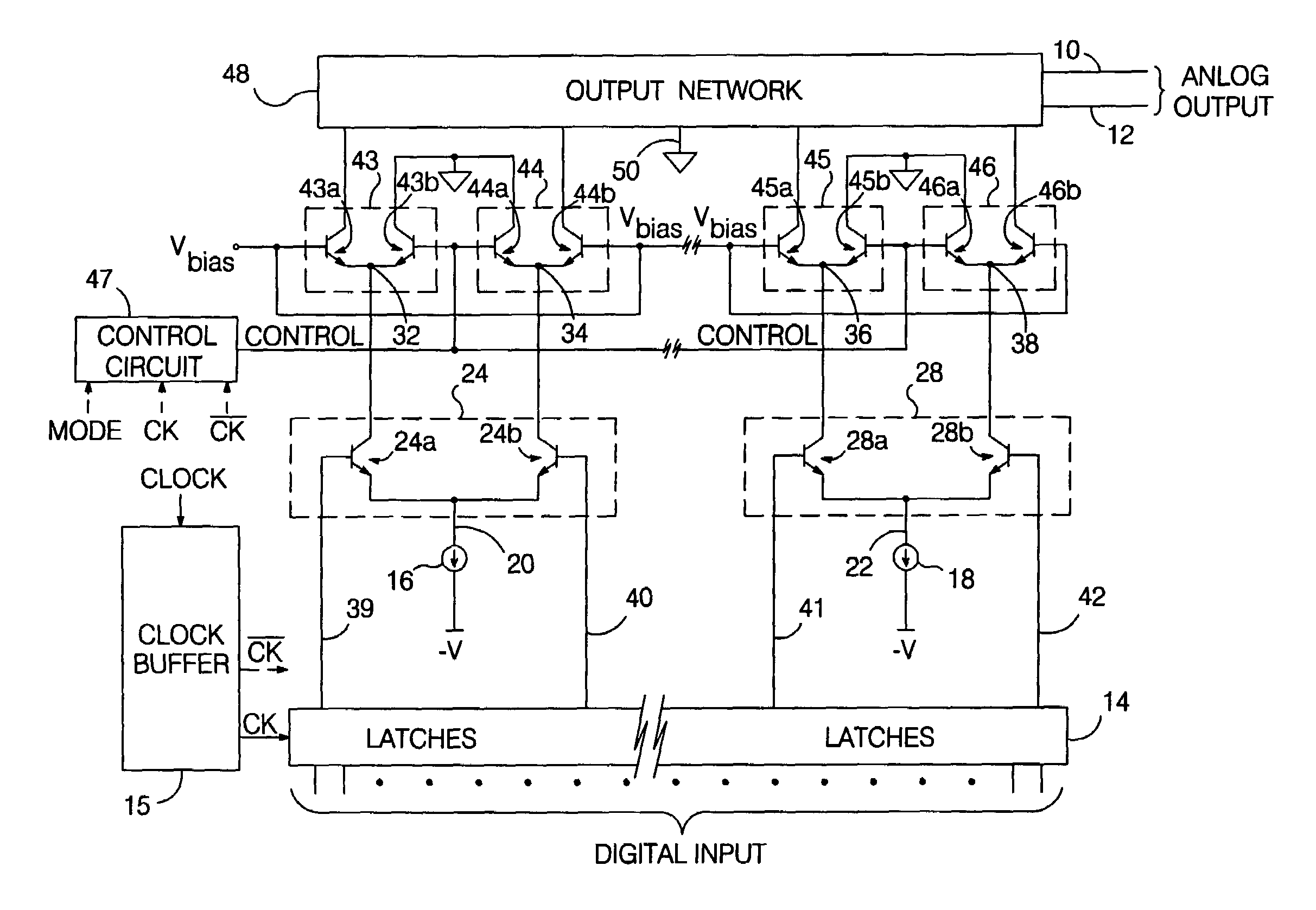Return-to-zero current switching digital-to-analog converter
a digital-to-analog converter and zero current technology, applied in the field of digital-to-analog converters, can solve the problems of significant noise in the actual dac output, significant limit the use of the dac in high frequency applications, unacceptable level of distortion in the dac output, etc., and achieve the effect of reducing switching and clock-induced noise and extending the frequency rang
- Summary
- Abstract
- Description
- Claims
- Application Information
AI Technical Summary
Benefits of technology
Problems solved by technology
Method used
Image
Examples
Embodiment Construction
[0033]An RZ current switching DAC per the present invention is shown in FIG. 2a. The DAC receives a digital input word and provides an analog output voltage. In the exemplary embodiment shown in FIG. 2a, the DAC provides a differential output on first and second analog output lines 10 and 12. A “zero” potential, which could be ground or a non-zero potential, is pre-defined for the DAC's analog output lines. The digital input word is received by clocked circuitry 14, typically a set of latches. The DAC typically includes a clock buffer 15, which receives a clock signal CLOCK, and provides a first clock signal CK and a second clock signal {overscore (CK )} which is the inverse of CK. The DAC includes a plurality of current sources; only two current sources (16, 18) are shown in FIG. 2a, but a practical DAC would typically include 10 or more current sources. Current sources 16 and 18 have respective outputs 20 and 22.
[0034]In the differential embodiment shown, the current source output...
PUM
 Login to View More
Login to View More Abstract
Description
Claims
Application Information
 Login to View More
Login to View More - R&D
- Intellectual Property
- Life Sciences
- Materials
- Tech Scout
- Unparalleled Data Quality
- Higher Quality Content
- 60% Fewer Hallucinations
Browse by: Latest US Patents, China's latest patents, Technical Efficacy Thesaurus, Application Domain, Technology Topic, Popular Technical Reports.
© 2025 PatSnap. All rights reserved.Legal|Privacy policy|Modern Slavery Act Transparency Statement|Sitemap|About US| Contact US: help@patsnap.com



